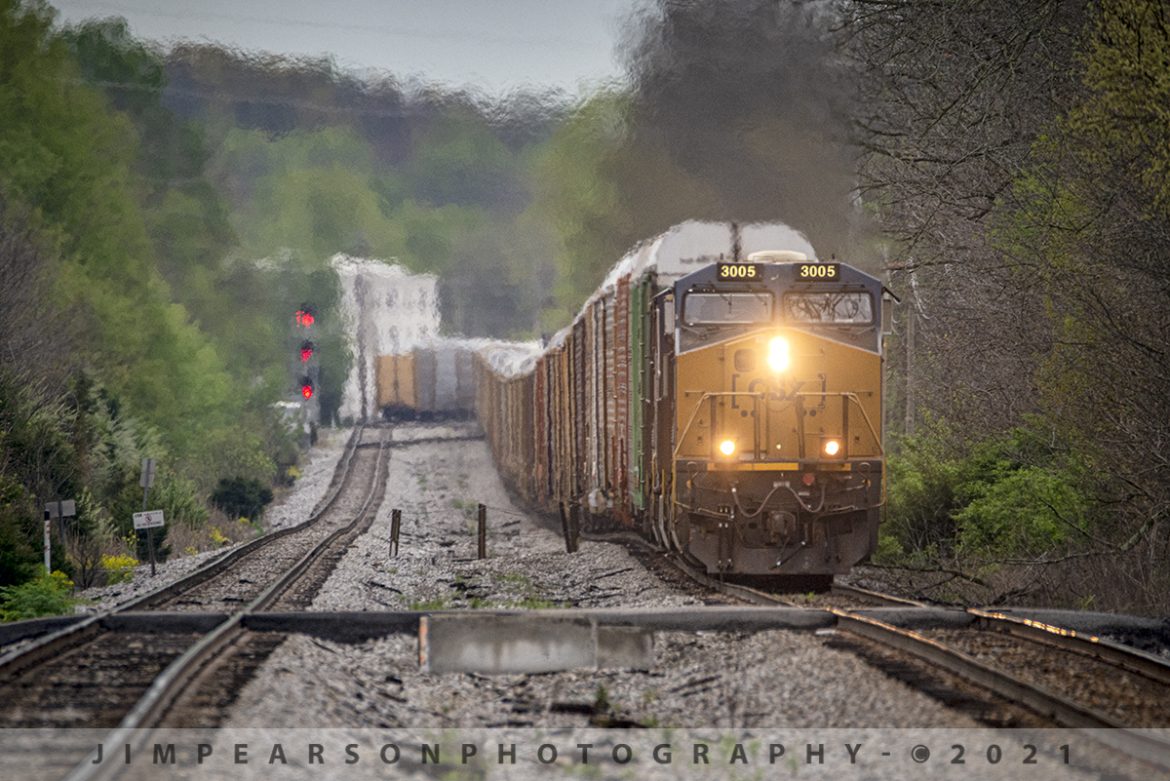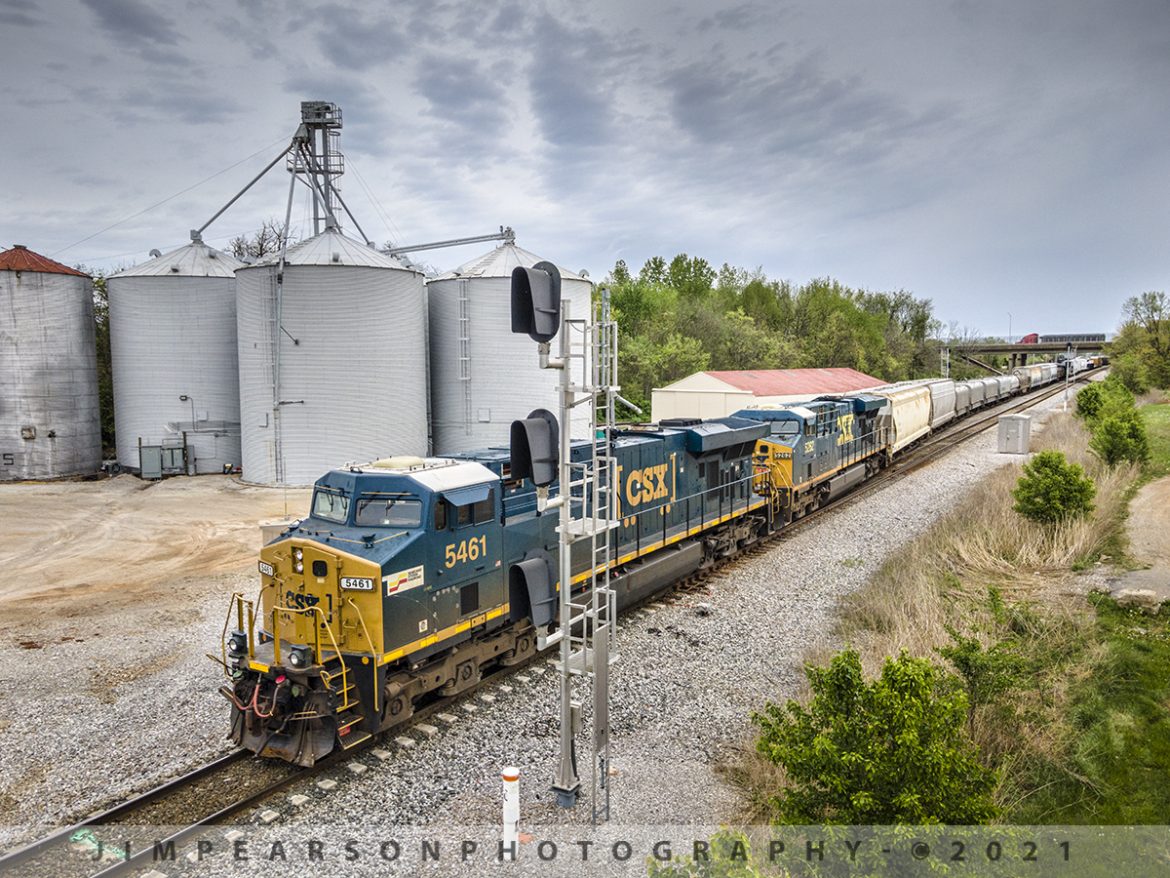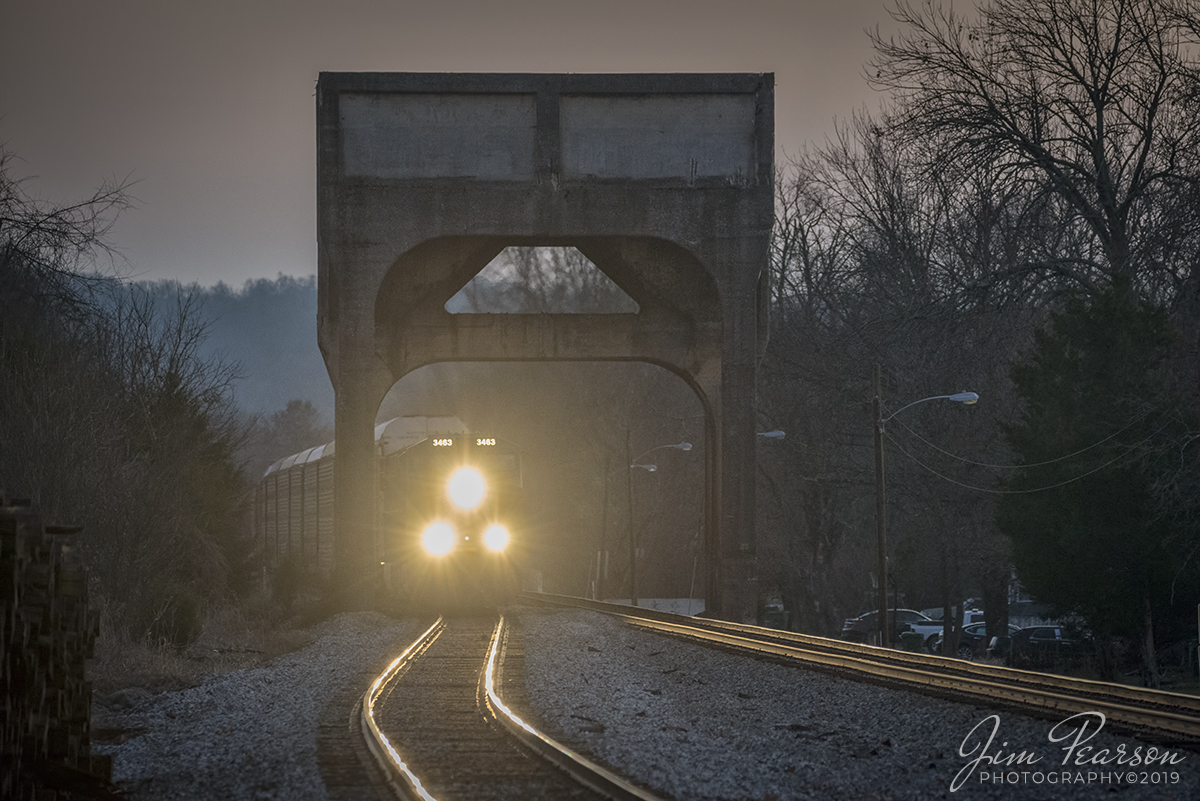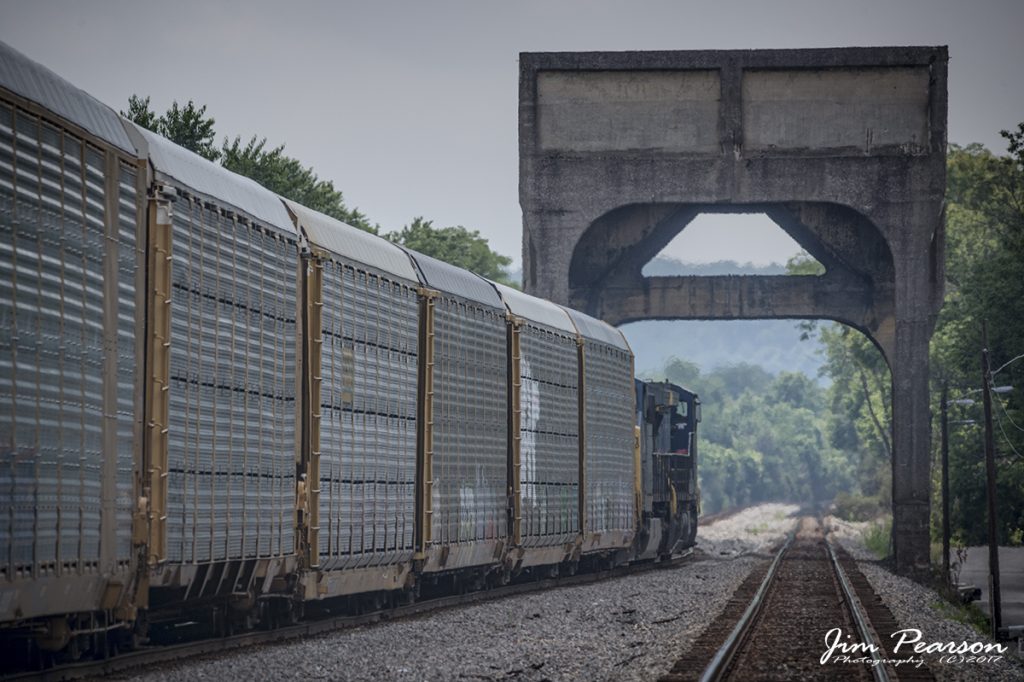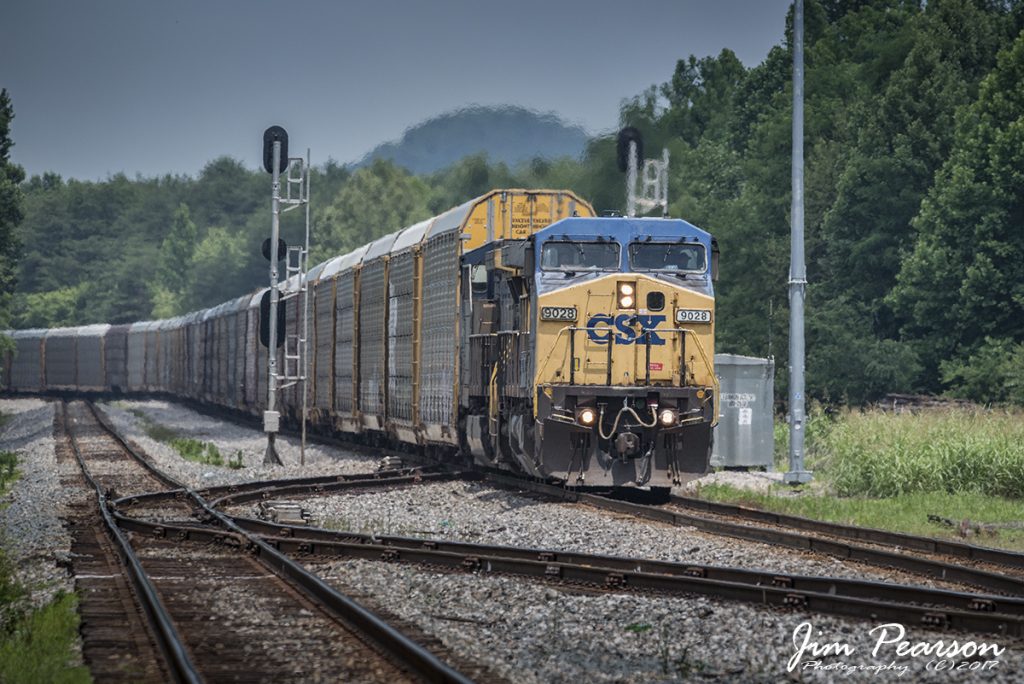Northbound Autorack on the CSX Mainline at Elizabethtown, KY
I totally enjoy exploring new territory when it comes to railfanning and such was the case here on the CSX Mainline Subdivision, with fellow railfan and navigator, Cooper Smith on April 14th, 2021.
Here we find CSXT 3005 leading autorack Q202 northbound through Elizabethtown, Ky on the CSX Mainline Subdivision. This sub runs between Nashville, TN and Louisville, Ky and while I have railfanned it before, it has been several years and I’ve really only explored it around the Bowling Green, Ky area.
Cooper and I actually tried to catch this train at a crossing at the other end, but we saw where another autorack was in the siding and thought we’d go find the next crossing to get a shot of this passing the other. However, if you notice way down the track to the left where the other train sets, it has no power, plus it’s further back than we thought it’d be. Even with my long lens if it had power on it I don’t think it would have mattered. As it was this was shot at 850mm at over ¼ mile away.
Tech Info: Nikon D800, RAW, Sigma 150-600mm with a 1.4 teleconverter @ 850mm, f/9, 1/640, ISO 1100.
CSXT 5461 Seaboard System Railroad sticker unit works at Bowling Green, Ky
On April 14th, 2021, my self and fellow railfan Cooper Smith spent the day chasing trains on the RJ Corman Memphis Line, the Paducah and Louisville Railway and the CSX Mainline Subdivision, when we I caught this shot of CSX Q587 working out of the south end of the CSX Memphis Junction Yard at Bowling Green, Kentucky on the CSX Mainline Subdivision.
This unit carries the Seaboard System Railroad sticker, which is one of the many railroads CSXT has absorbed over the years. I along with many others wish CSXT would go a bit further like many other railroads and would paint some of their units in the roads theyve acquired over the years.
I havent really railfanned the Memphis line a lot over the years, despite it being only about 1.5 hours from my home, but with the success from this trip that will probably change! In fact, this circuit proved to be so well, I think itll become a frequent one in my railfanning.
The Mainline subdivision runs from Nashville, TN, to Louisville, KY. The RJ Corman Memphis Line runs from Cumberland City, TN and Bowling Green, KY and the Paducah and Louisville Railway runs between Paducah and Louisville, Ky.
Tech Info: DJI Mavic Air 2 Drone, RAW, 4.5mm (24mm equivalent lens) f/2.8, 1/640, ISO 100.
CSXT 3463 leads CSX Q224 under the old coaling tower at Lebanon Junction, Kentucky
December 7, 2019 – As the last light of the day fades, CSXT 3463 leads CSX Q224 under the old coaling tower at Lebanon Junction, Kentucky as it heads north on the Mainline Subdivision (Short Line).
According to Wikipedia: Lebanon Junction sprang into existence from a railroad switching point that split Louisville and Nashville Railroad (now CSX Transportation) traffic off the mainline to the Lebanon branch that ended in Lebanon, Kentucky. This branch was completed no later than March 8, 1858, and the town grew out of a need for railroad workers to man the terminal and switching station.
A coaling tower, coal stage or coaling station is a facility used to load coal as fuel into railway steam locomotives. Coaling towers were often sited at motive power depots or locomotive maintenance shops.
Coaling towers were constructed of wood, steel-reinforced concrete, or steel. In almost all cases coaling stations used a gravity fed method, with one or more large storage bunkers for the coal elevated on columns above the railway tracks, from which the coal could be released to slide down a chute into the waiting locomotive’s coal storage area. The method of lifting the bulk coal into the storage bin varied. The coal usually was dropped from a hopper car into a pit below tracks adjacent to the tower. From the pit a conveyor-type system used a chain of motor-driven buckets to raise the coal to the top of the tower where it would be dumped into the storage bin; a skip-hoist system lifted a single large bin for the same purpose. Some facilities lifted entire railway coal trucks or wagons. Sanding pipes were often mounted on coaling towers to allow simultaneous replenishment of a locomotive’s sand box.
As railroads transitioned from the use of steam locomotives to the use of diesel locomotives in the 1950s the need for coaling towers ended. Many reinforced concrete towers remain in place if they do not interfere with operations due to the high cost of demolition incurred with these massive structures.

